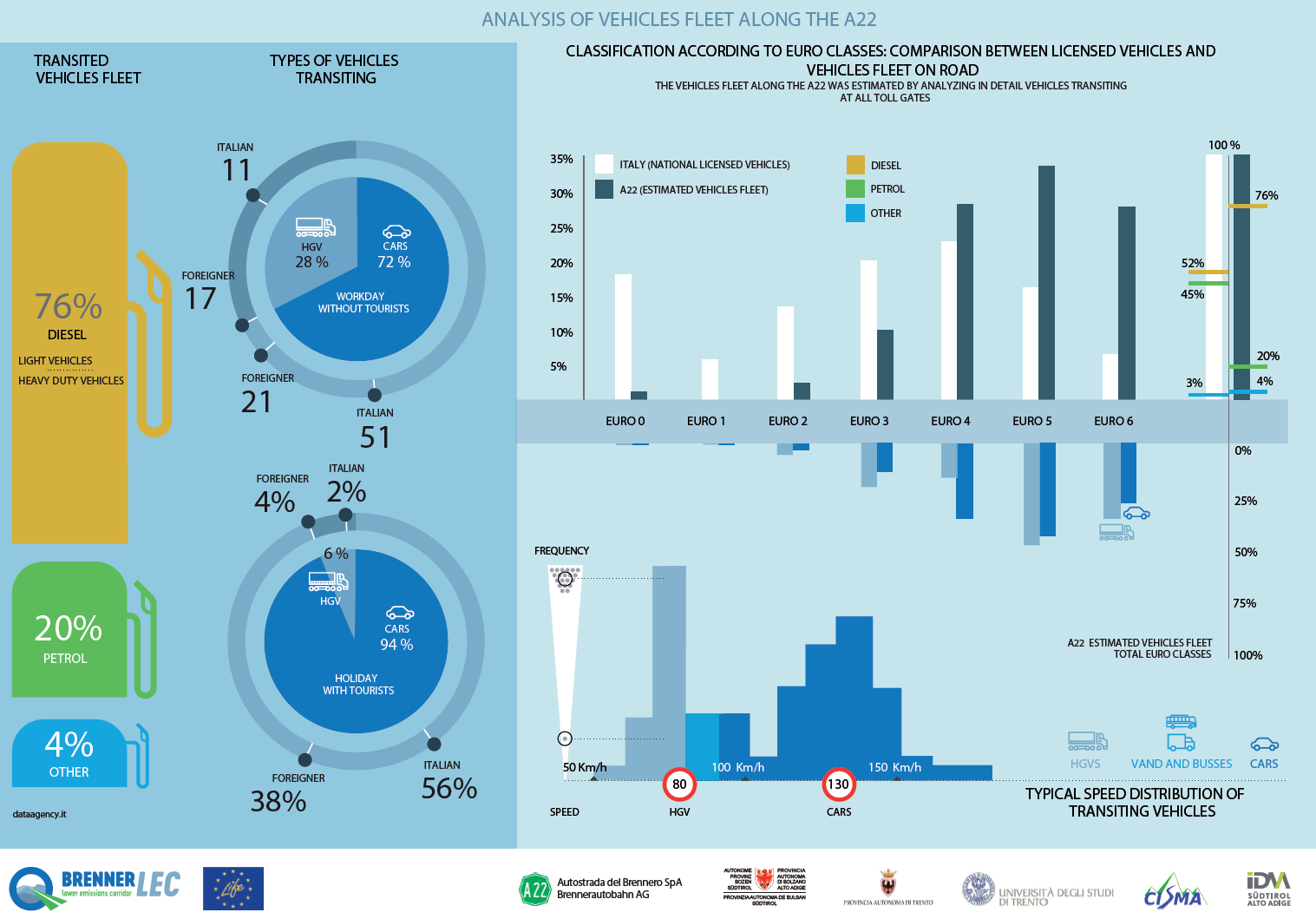Study A22 traffic
[Publication Date: December 2018]
Thanks to the studies carried out in the scope of the BrennerLEC project, it has been possible to get a very detailed picture of the vehicles which have transited on the A22 highway in 2017 in the road stretch between Brenner and Affi. Number, type, origin and destination, nationality, emission peculiarities, average speeds, average consumption, fuel supply: thanks to all this information it is now possible to optimally calibrate the pilot measures of BrennerLEC.
The research has put in evidence a greater number of newer vehicle, i.e. with higher EURO classes. The turnover rate of heavy vehicles is so quick that already now about the 70% is EURO 5 or EURO 6. 80% of the light vehicles is EURO 4, EURO 5 or EURO 6; the national circulating fleet is about 50%.
From this data one could expect that the average emissions produced per chilometre is lower if compared to reference national averages. This is only in part true, because of the fuel supply of the vehicles that drive on the highway. While the majority of heavy vehicles is diesel-fueled, the percentage of diesel cars is about 76%.
The final picture which is achieved is surprising: the cars that can drive at a speed greater of 100 km/h are responsible for about the 50% of the NOx emissions. This is the category of vehicles which is mainly targeted by the pilot dynamic speed limit measures introduced by the BrennerLEC project.
Dynamically limiting the speed limits is therefore an important action, since the NOx produced by diesel cars (even the more recent ones) increase very significantly when the speed is higher than 80 km/h. For example, passing from a speed of 130 km/h to a speed of 100 km/h a EURO 5 diesel car emits the 30% less of NOx. The dynamic reduction of speed limits has remarkable effects also on the average annual concentrations of NO2 at the roadside of the highway. The BrennerLEC project has demonstrated a reduction of about 10% with an average reduction of the light vehicles' speed of about 15 km/h in presence of a dynamic speed limit of 100 km/h. The results of this study can now better explain and understand the first significant effects associated to the dynamic speed limit activation.
Infographics circulating fleet on the A22
Infographics emission contribution of the different vehicles' type on the A22
Report (in Italian)



